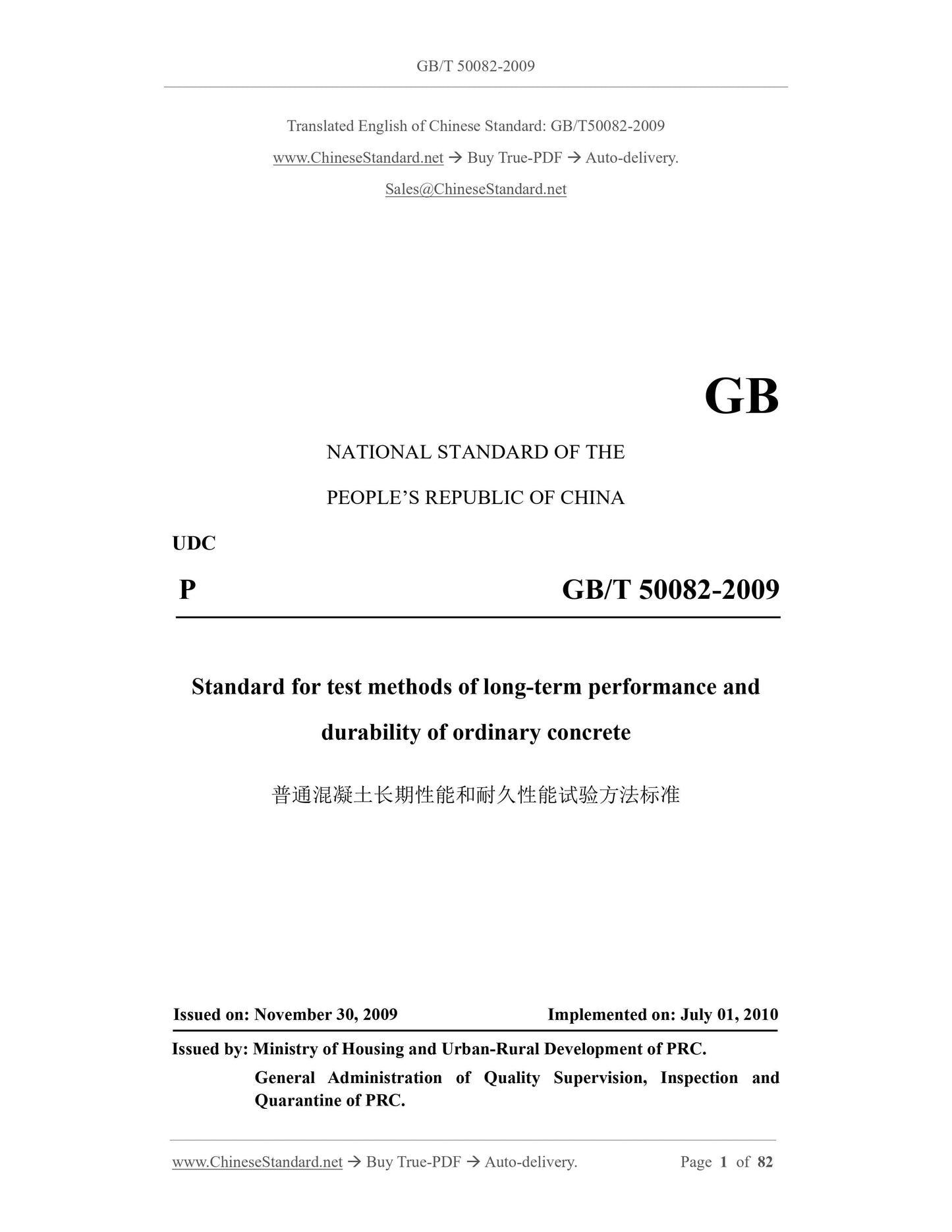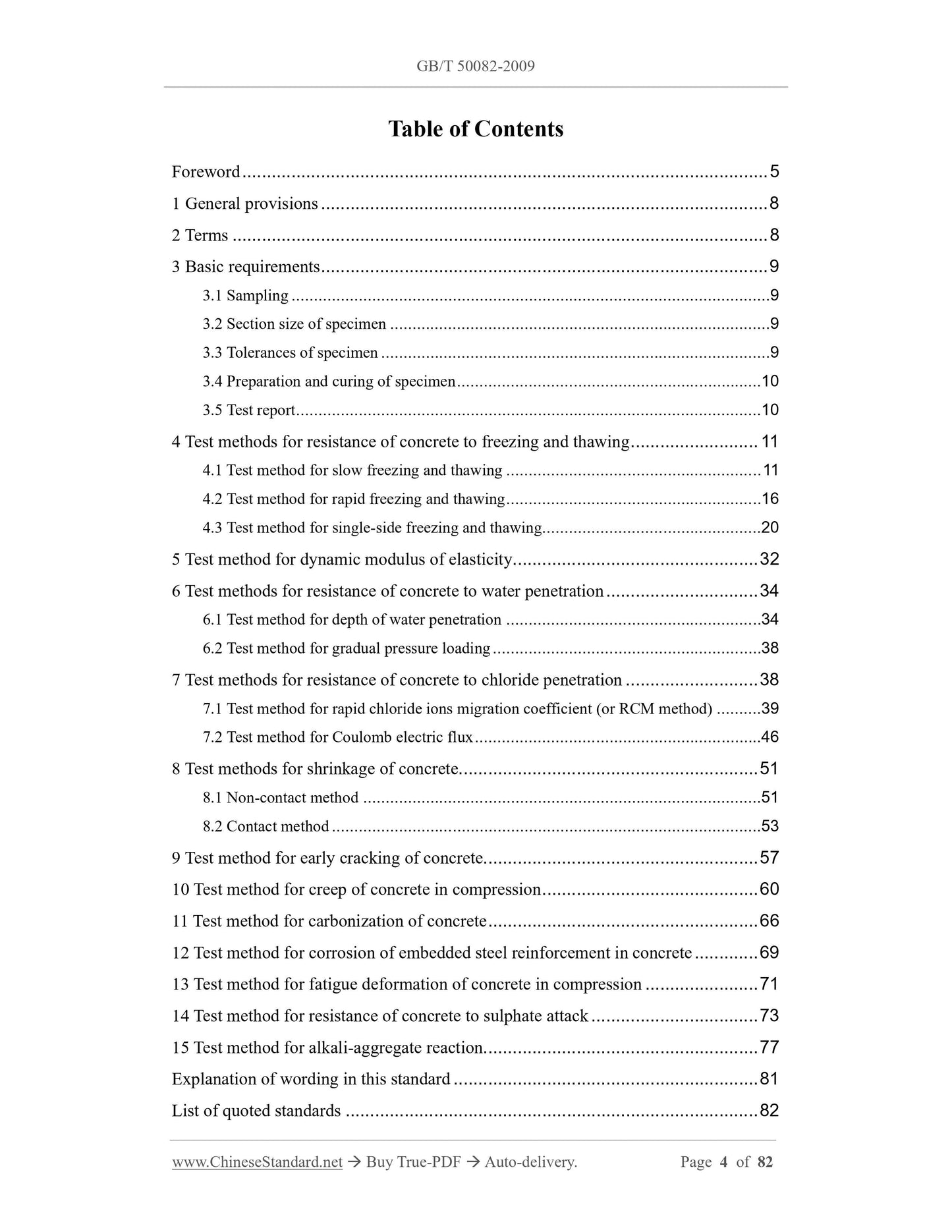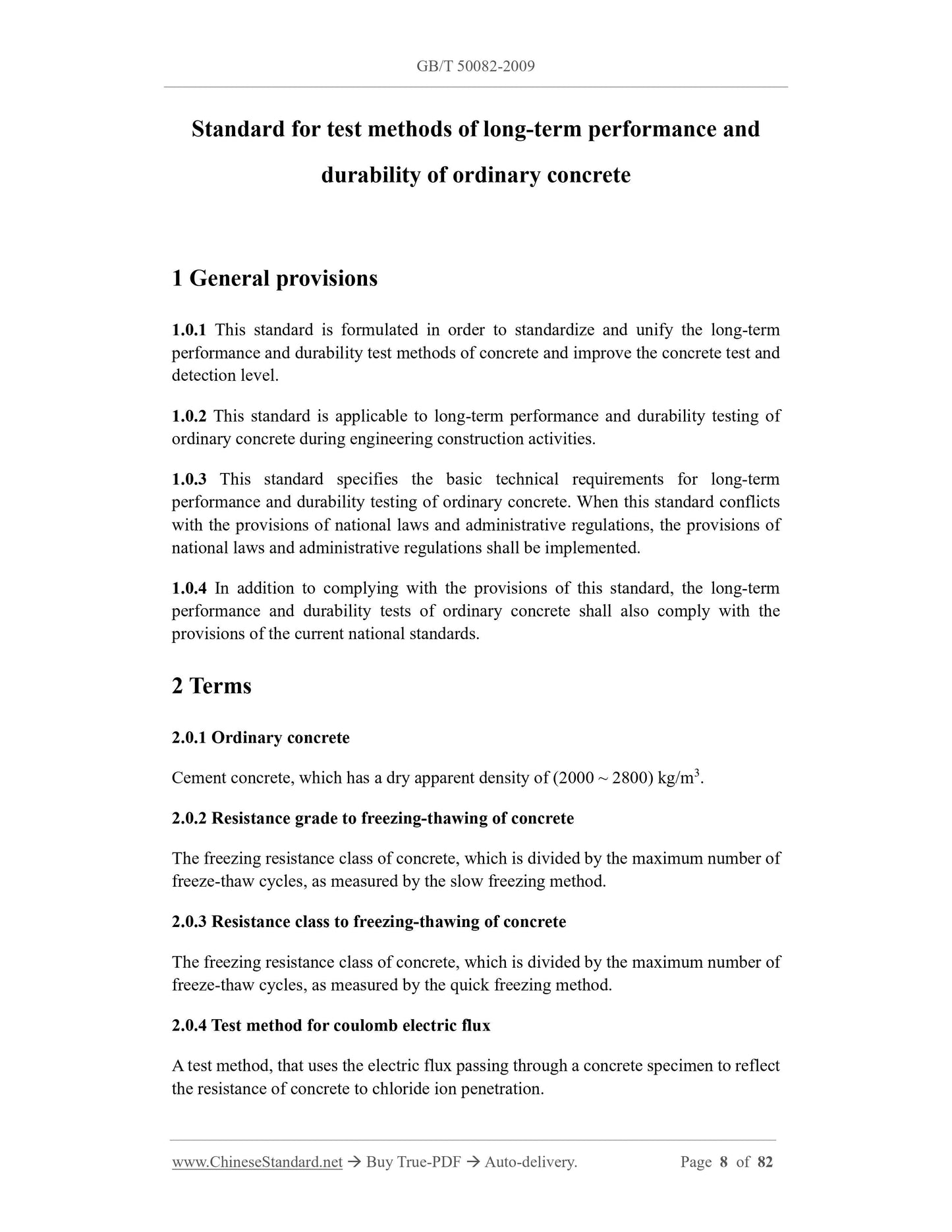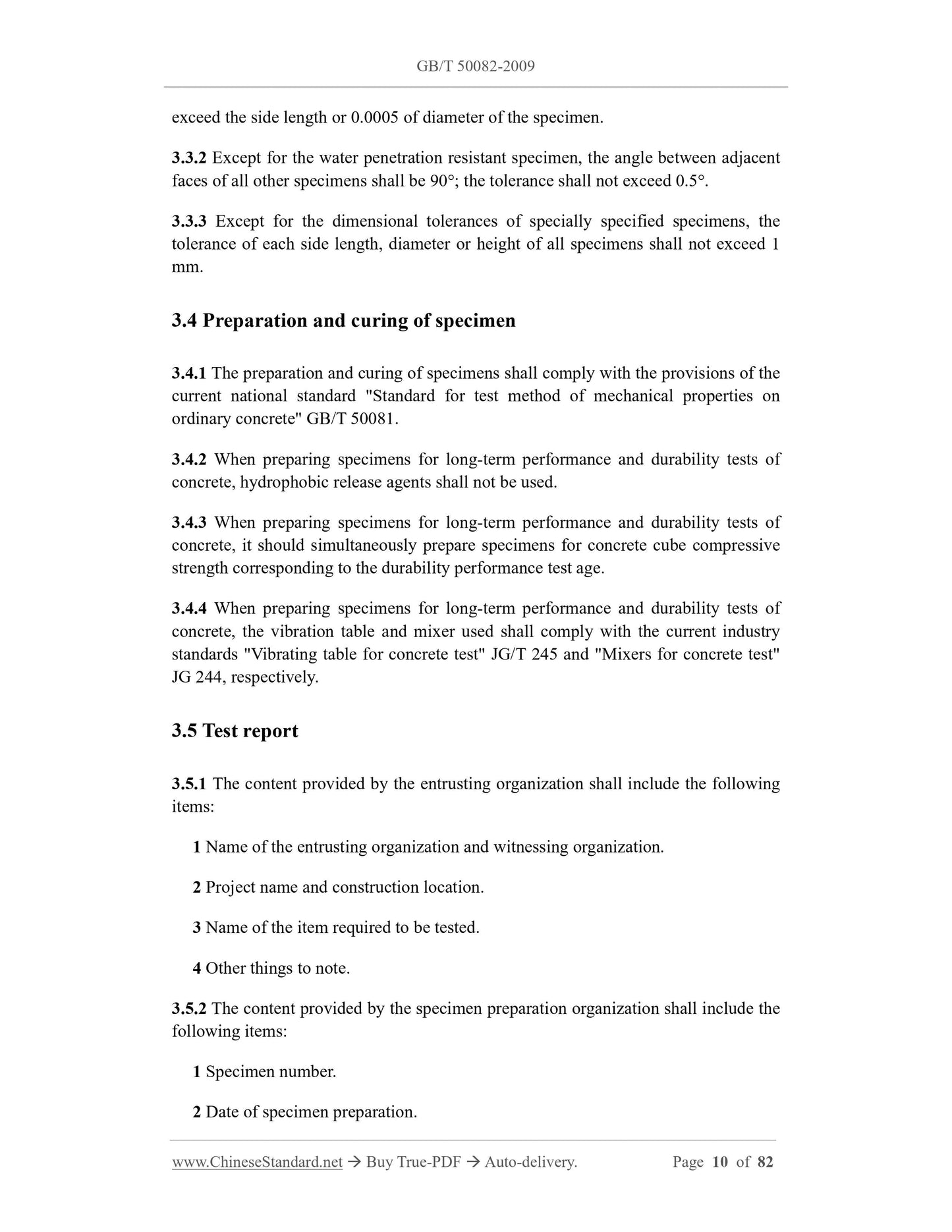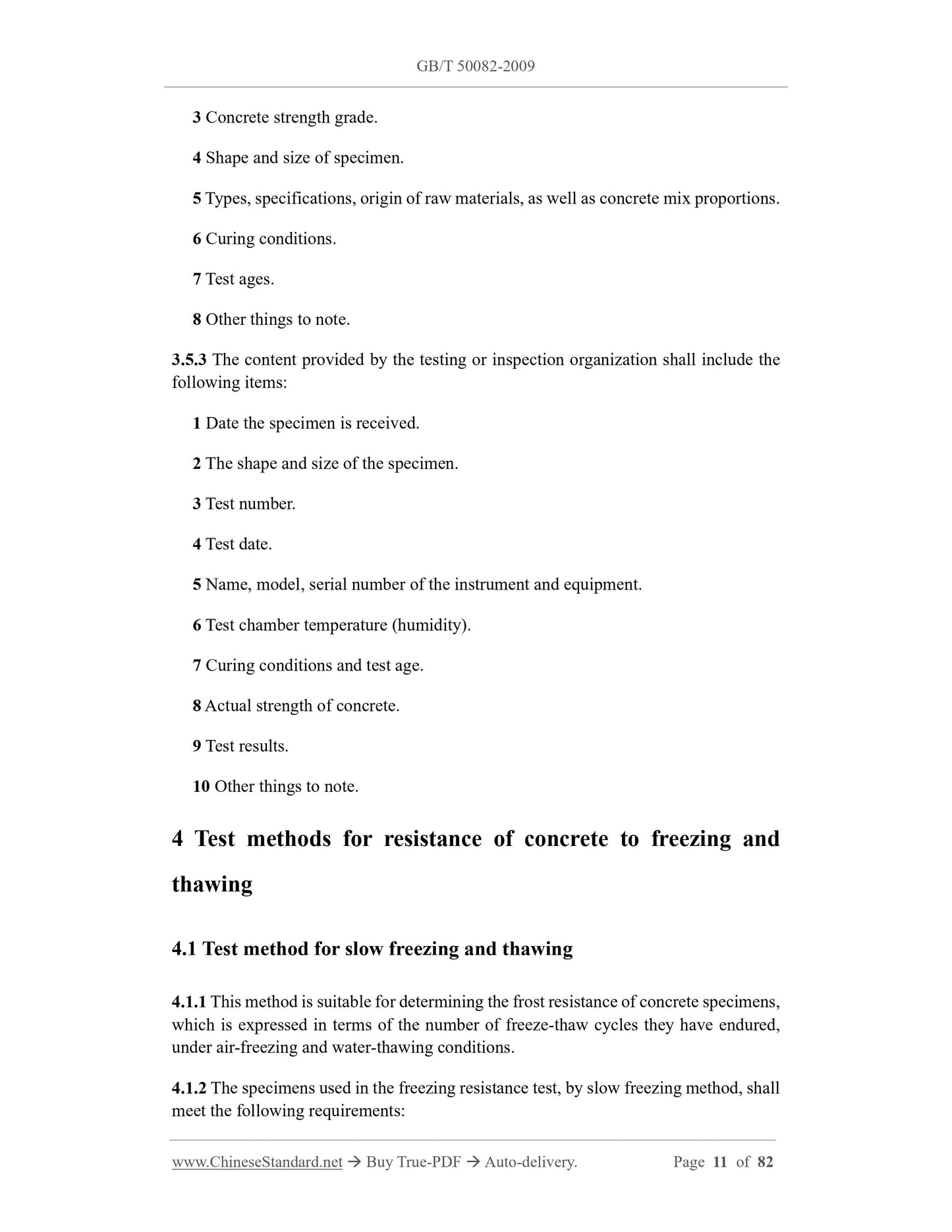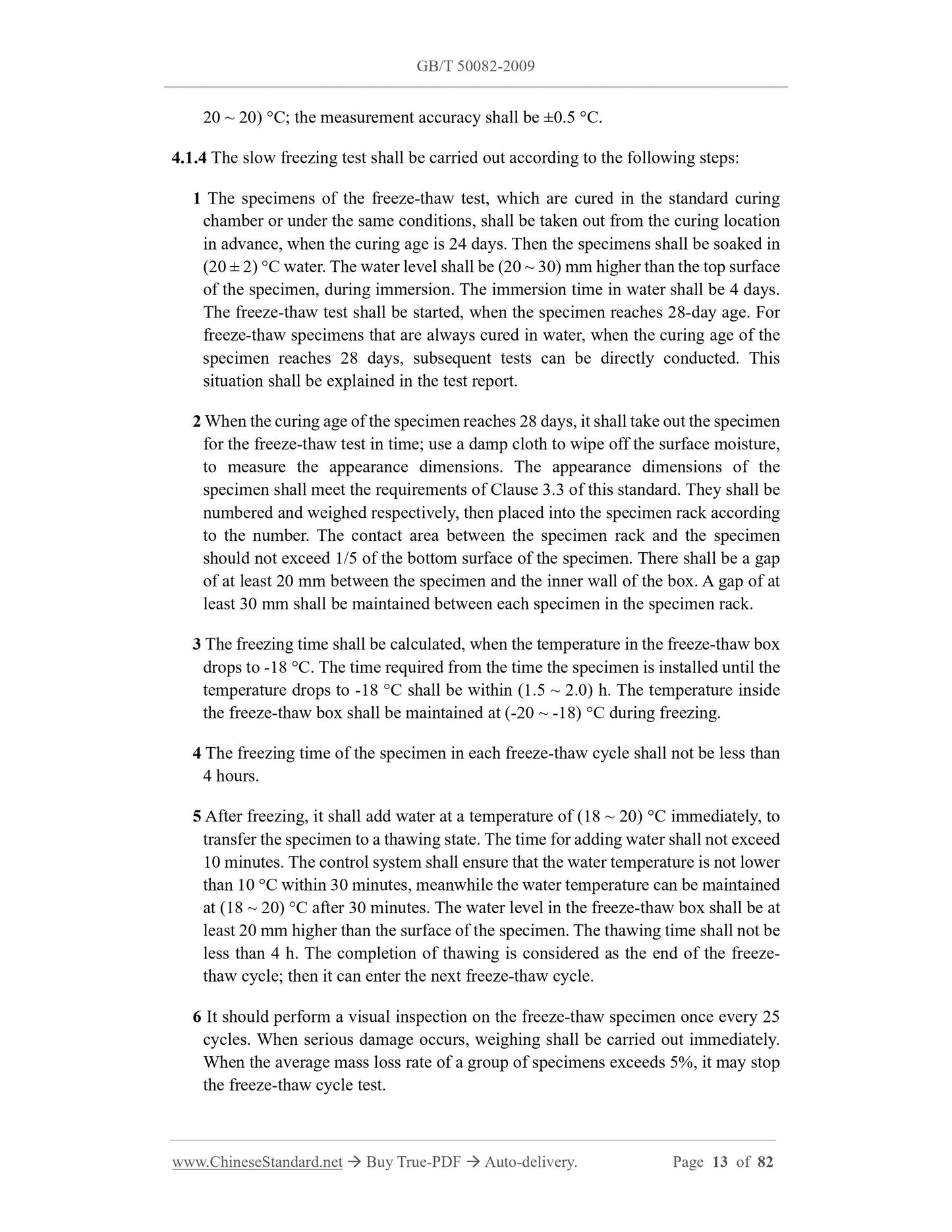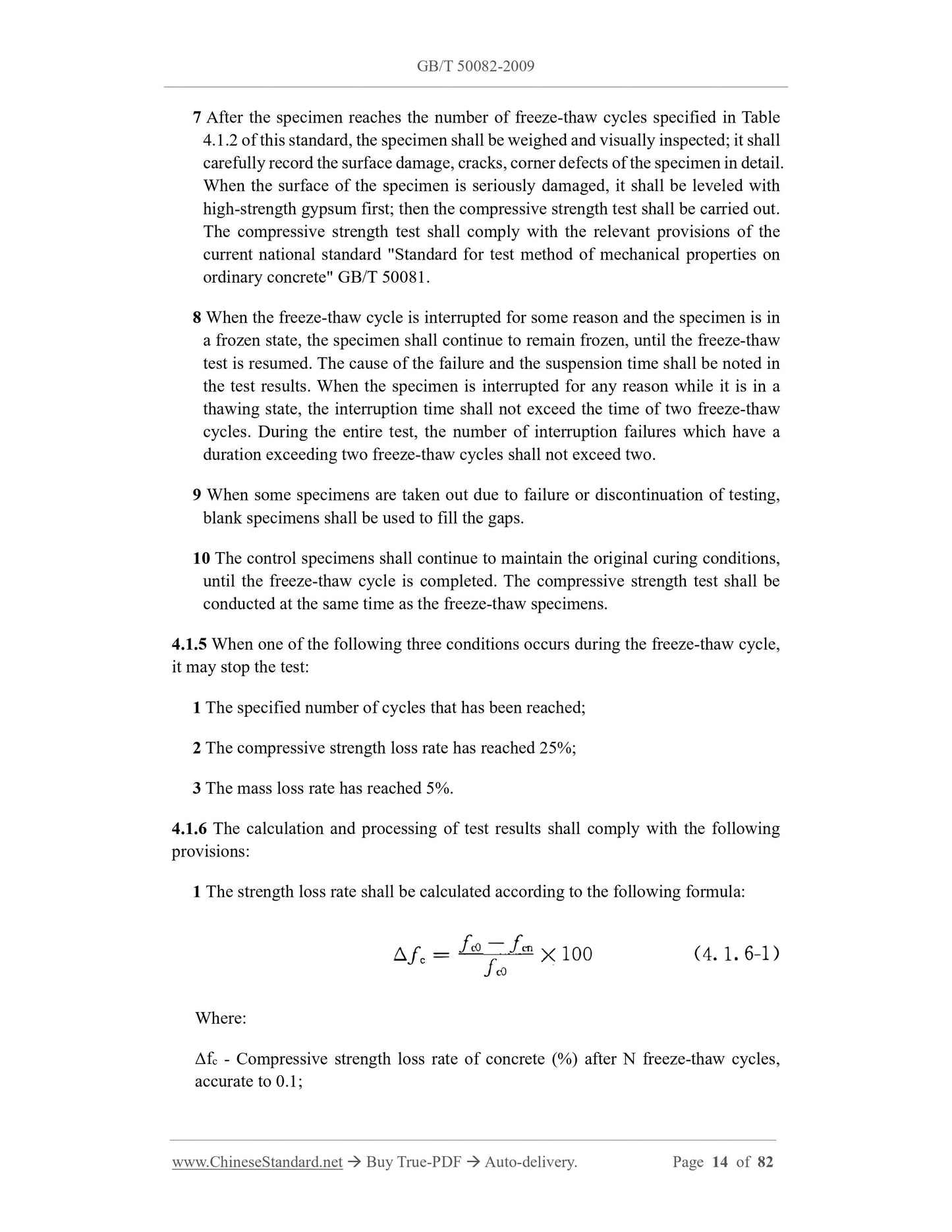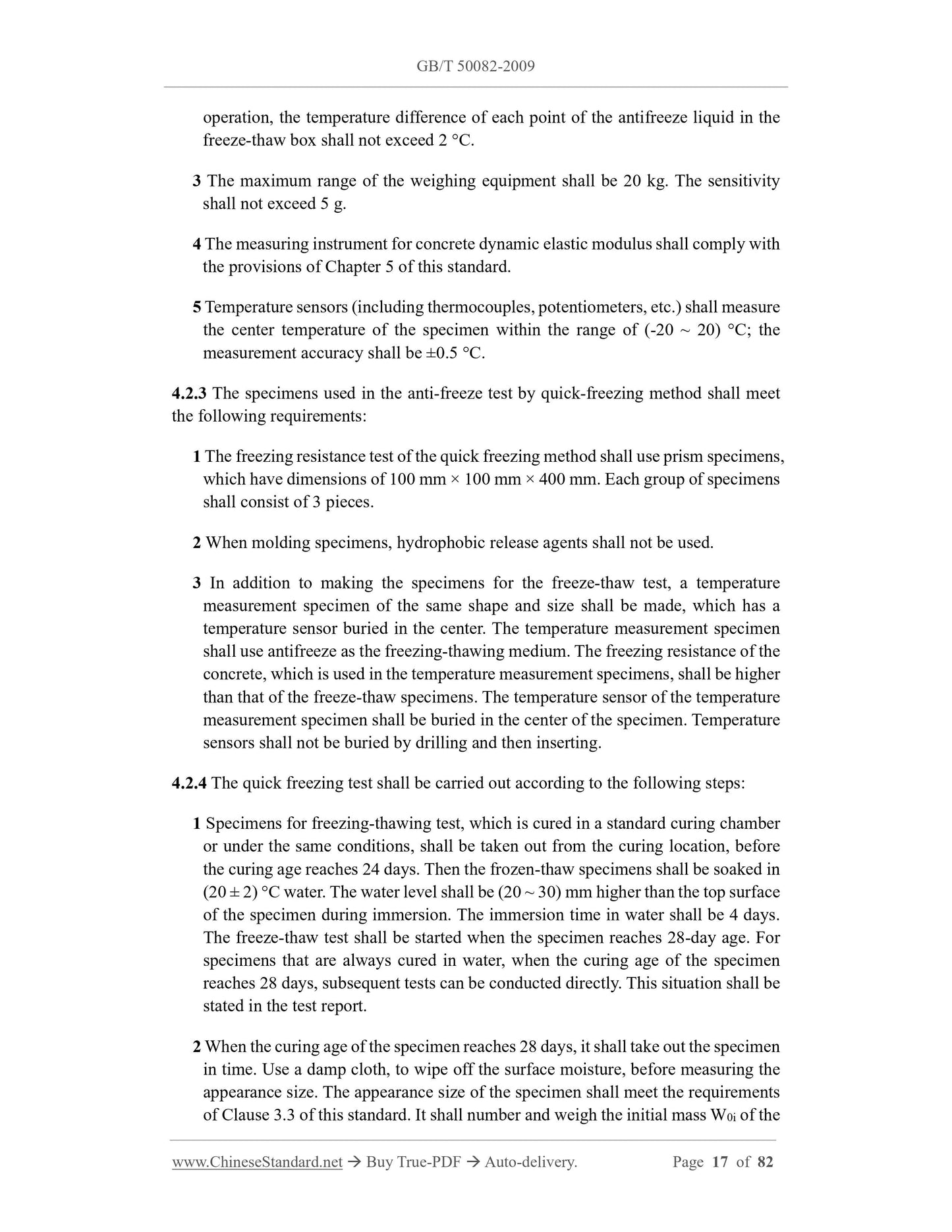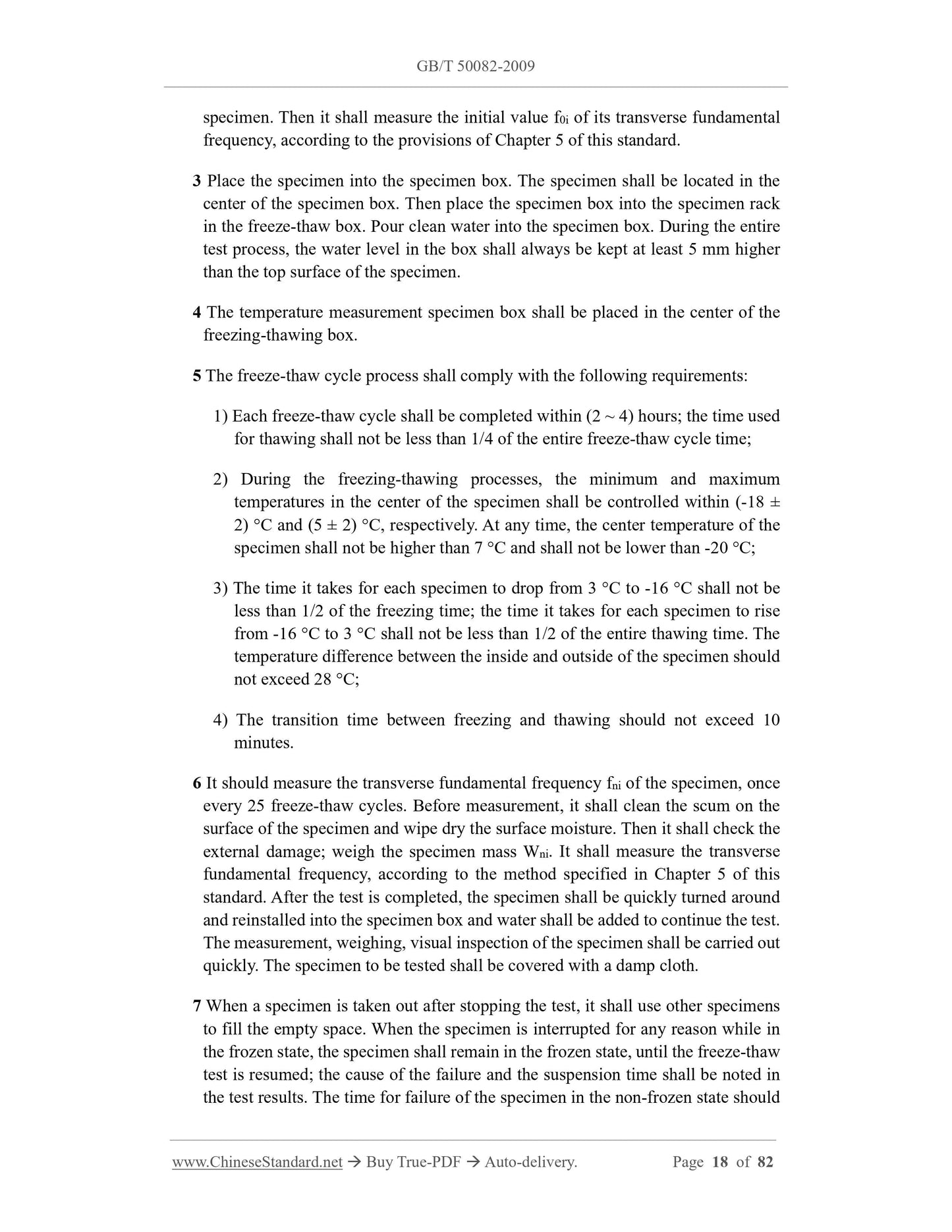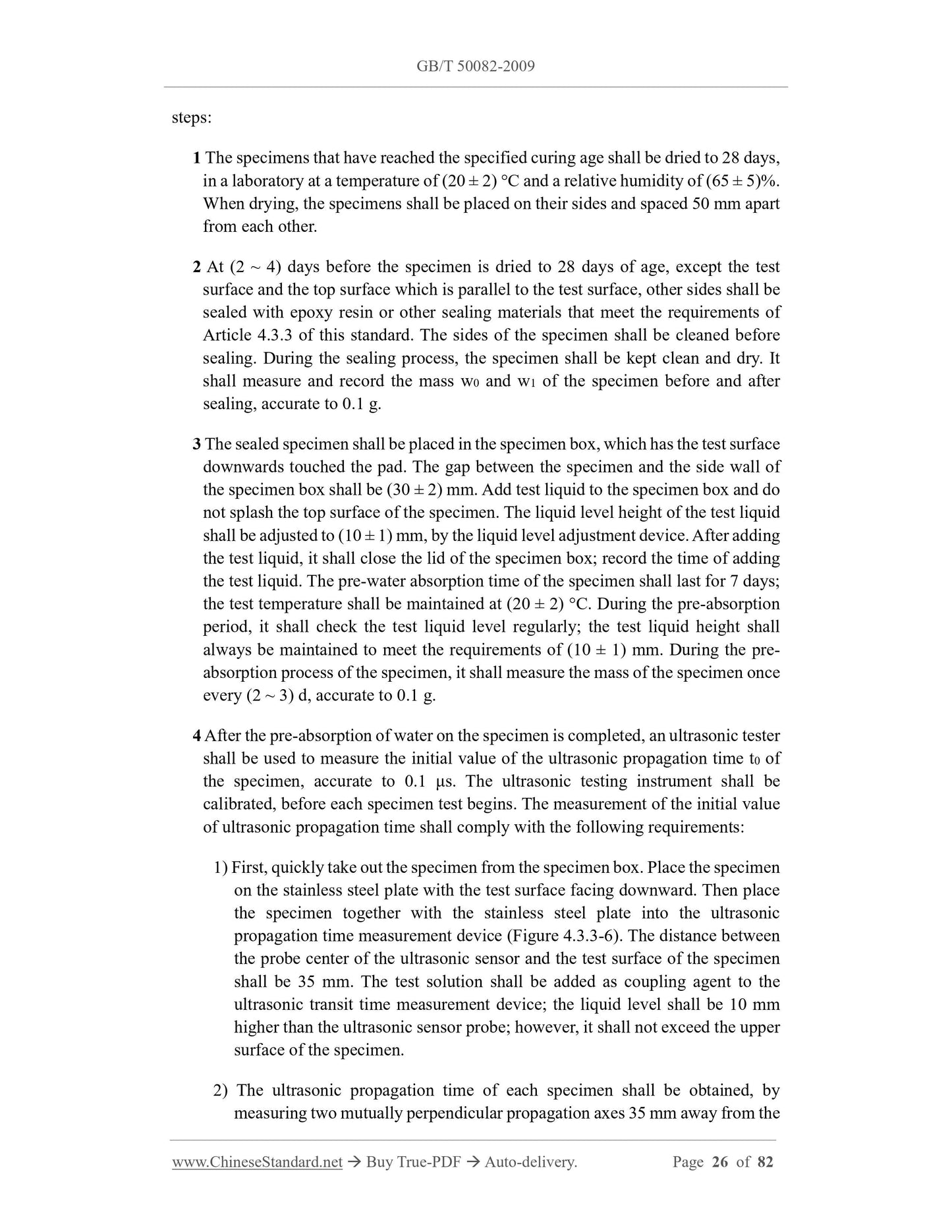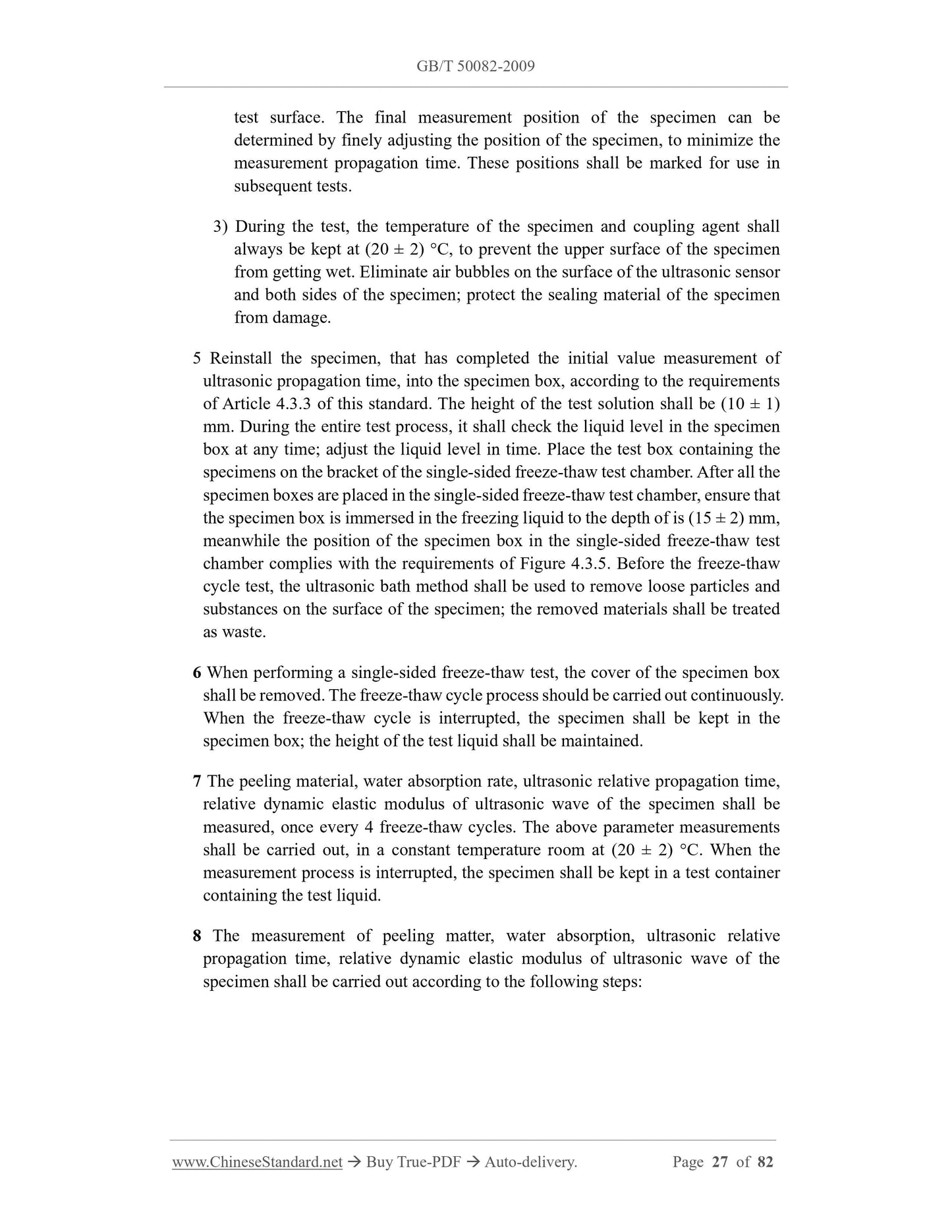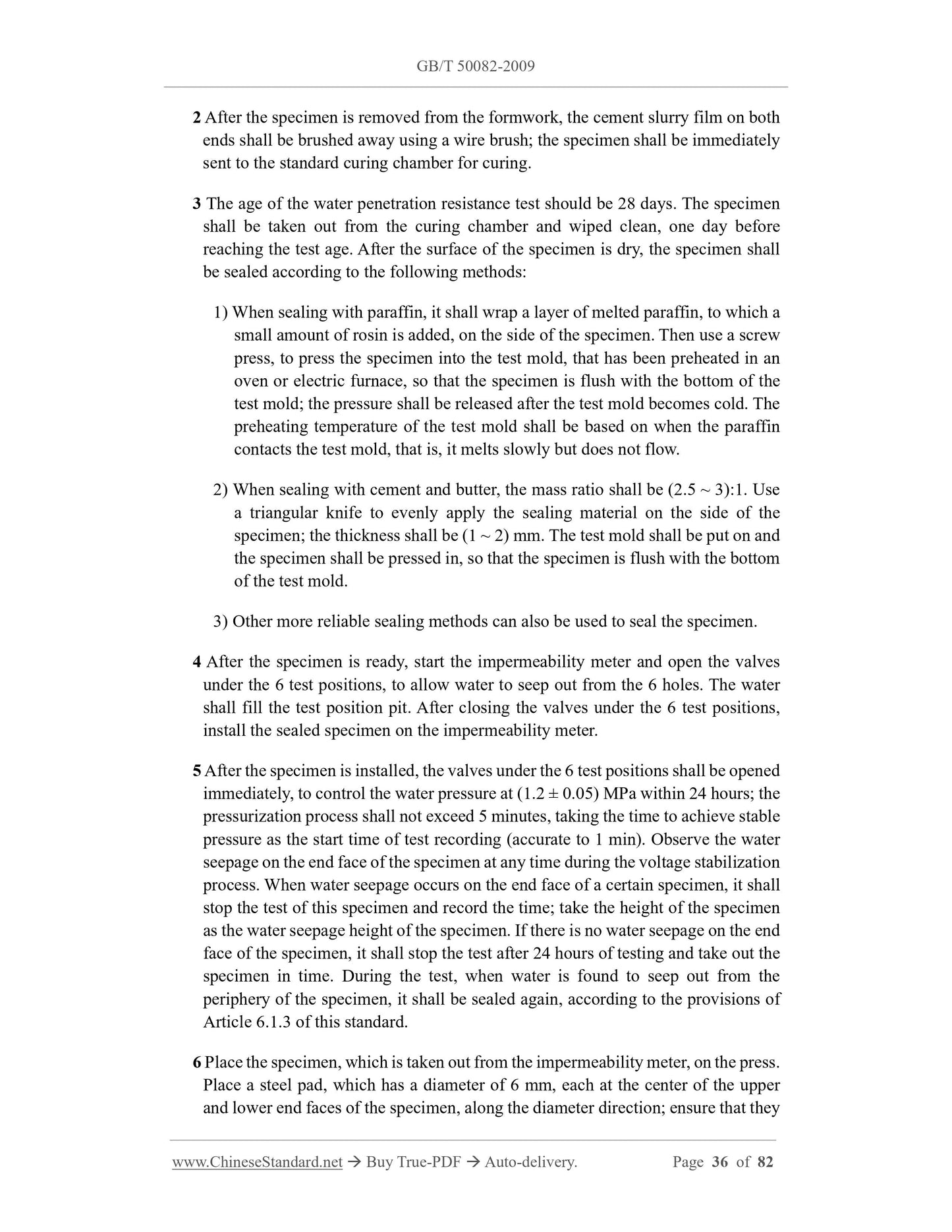1
/
of
12
www.ChineseStandard.us -- Field Test Asia Pte. Ltd.
GB/T 50082-2009 English PDF (GB/T50082-2009)
GB/T 50082-2009 English PDF (GB/T50082-2009)
Regular price
$315.00
Regular price
Sale price
$315.00
Unit price
/
per
Shipping calculated at checkout.
Couldn't load pickup availability
GB/T 50082-2009: Standard for test methods of long-term performance and durability of ordinary concrete
Delivery: 9 seconds. Download (and Email) true-PDF + Invoice.Get Quotation: Click GB/T 50082-2009 (Self-service in 1-minute)
Newer / historical versions: GB/T 50082-2009
Preview True-PDF
Scope
1.0.1 This standard is formulated in order to standardize and unify the long-termperformance and durability test methods of concrete and improve the concrete test and
detection level.
1.0.2 This standard is applicable to long-term performance and durability testing of
ordinary concrete during engineering construction activities.
1.0.3 This standard specifies the basic technical requirements for long-term
performance and durability testing of ordinary concrete. When this standard conflicts
with the provisions of national laws and administrative regulations, the provisions of
national laws and administrative regulations shall be implemented.
1.0.4 In addition to complying with the provisions of this standard, the long-term
performance and durability tests of ordinary concrete shall also comply with the
provisions of the current national standards.
Basic Data
| Standard ID | GB/T 50082-2009 (GB/T50082-2009) |
| Description (Translated English) | Standard for test methods of long-term performance and durability of ordinary concrete |
| Sector / Industry | National Standard (Recommended) |
| Classification of Chinese Standard | P25 |
| Classification of International Standard | 91.080.40 |
| Word Count Estimation | 174,153 |
| Date of Issue | 2009-11-30 |
| Date of Implementation | 2010-07-01 |
| Older Standard (superseded by this standard) | GBJ 82-1985 |
| Quoted Standard | GB/T 50080; GB/T 50081; JGJ 52; JG 237; JG/T 243; JG 244; JG/T 245; JG/T 247; JG/T 249; JG/T 261; JG/T 262 |
| Regulation (derived from) | Ministry of Housing and Urban-Rural Development Bulletin No.454 |
| Issuing agency(ies) | Ministry of Housing and Urban-Rural Development of the People's Republic of China; General Administration of Quality Supervision, Inspection and Quarantine of the People's Republic of China |
| Summary | This standard applies to long-term performance and durability of construction activities can be carried out on ordinary concrete test. |
Share
